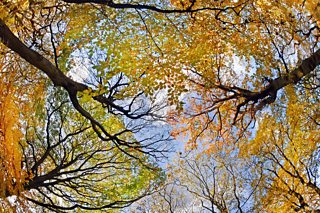
The Berlin Wall - a symbol of the Cold War - pictured in November 1989
A new import of �������� World Service listings has enabled us to link hundreds more archive programmes to �������� Genome. We look at some of the highlights.
Mikhail Gorbachev and Henry Kissinger are just two of the interviewees in a remarkable 10-part series on the Cold War, , now available to listen to in full via �������� Genome. The ��������'s Gabriel Partos charts the tense four-and-a-half decades of the Cold War using almost 200 original interviews with world leaders, diplomats, scientists, spies, economists and citizens. They bring the historical clash between capitalism and communism to life with their eye-witness accounts, full of the sort of detail that inevitably gets lost in the overview of ever-more distant events.
However, we also hear major players on both sides – including former heads of the CIA and KGB - reflect candidly with hindsight on their part in conflicts . Fascinating listening, from Yalta to Malta, whether you are exploring the Cold War period for the first time or cross-referencing your own memories of the time.

A very different subject but also one of global importance is explored in 12-part 1992 series on trees. The first programme starts off, as you might predict, at Kew Gardens, about deforestation. However, it quickly branches out (pardon the pun) into a wonderfully rambling and imaginative exploration of trees in many guises: science (), , architecture (the deep ), mythology (), and . Whether you are a gardener or poet, live in the town or country, you will surely want to hug the nearest tree by the end of each of these 10-minute programmes.
In Salt Mustard Vinegar Pepper from 1992, Heather Temple gives us four sprinklings of history, anecdote, science and cooking, from to the Californian "mustard trails". They’re full of snippets that make you want to turn to the person next to you and ask “Did you know… that most mustard seed is grown on the Canadian prairies?” or “Have you heard about… the macaque monkeys who dip their food in sea water to improve the taste?” A perfect accompaniment to any main course.
How have we exposed new listings?
�������� World Service was a relative late-comer to the programme pages of Radio Times. World Service listings were first published as a single page once a month, beginning with issue 3323, 1 August 1987. World Service finally joined other stations on the magazine’s day-by-day listings pages in the dedicated radio section on Saturday 5 June 1993. Until now, these early World Service listings haven’t been available in Genome.
Simon Smith, who has unpicked these pages and separated out each day’s programmes for us, explains his task: “World Service listings in the 1987-93 period are a single page per month, composed of two tables: one of regular (news) programmes, and the other of per-day-of-week variable programmes. The task when recovering them for Genome was to project the two listing patterns across the calendar month. It was a multi-stage, fiddly process.”
And at Genome, we continue the fiddly but satisfying business of, month by month, joining up the World Service archive programmes with their Genome listings.
